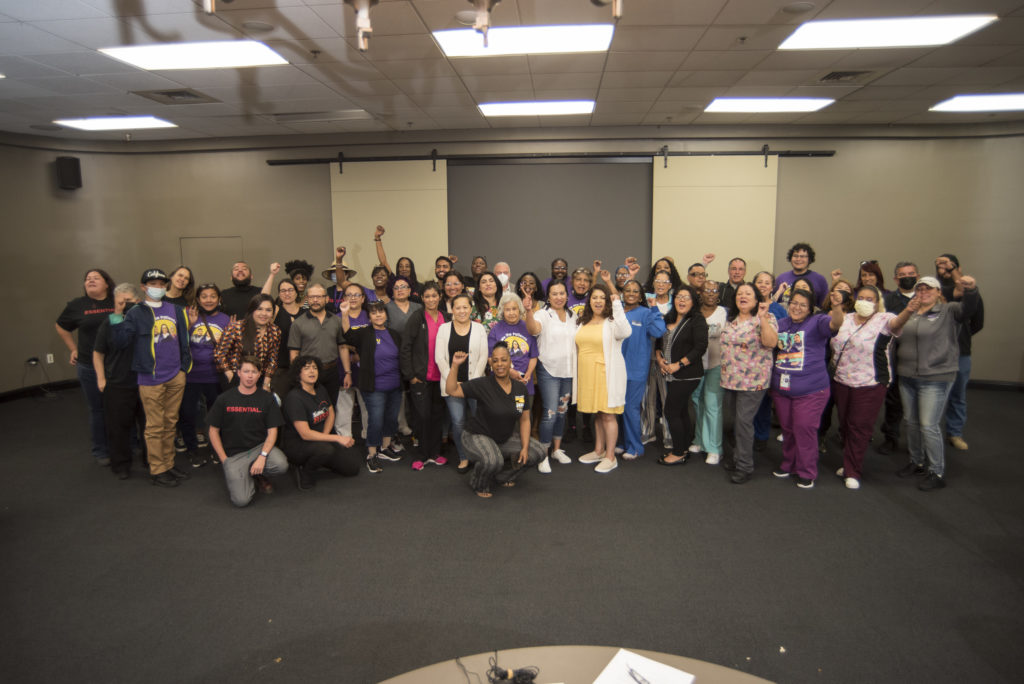

To fight for the health of my patients at Golden Valley Health Center, I, along with hundreds of community clinic workers united in SEIU, traveled to Sacramento to make sure that lawmakers heard directly from our community on the crisis facing our clinics.
We are facing a breaking point: Our state’s community clinics are underfunded and, without the necessary investment in retaining and training workers, our patients suffer.
Because we were willing to take a stand and demand better for our communities, our coalition of community clinic workers, patients and CEOs was able to secure a historic investment in our community clinics. With the leadership of State Senator Bob Hertzberg (D–Sherman Oaks) and Assembly Member Wendy Carrillo (D–Los Angeles), community clinic workers will receive much-needed relief.
Last month, Governor Gavin Newsom and the state legislature committed more than $70 million to invest in the retention of community clinic workers. Because we were willing to speak out, 70,000 community clinic full-time and part-time workers will receive $1,000 retention payments.
The past two years have been difficult for community clinics across our state. Despite ranking among the largest healthcare systems in the state and serving more than 6 million Californians, the hundreds of federally qualified health centers—also known as community clinics—are often overlooked and overwhelmed.
Community clinics ensure that everyone, regardless of their ability to pay, their race, immigration or housing status, can access quality care. Without community clinics, our patients—more than 70% of whom are people of color and more than half fall under the federal poverty line—would have nowhere to turn to care outside of an emergency room.
I grew up in Dos Palos in the farmworker community. When I was younger, my mom worked in the fields and when we needed healthcare services, we couldn’t afford the healthcare services available in town, so we had to travel up to an hour to the nearest community clinic.
Today, there are more community clinics to better serve our communities, but we have a long way to go to ensure that every patient that comes through our doors has timely access to care and the support they need and deserve.
As a patient access representative in the call center in Atwater, I’m proud to build strong relationships with our returning patients and it feels like we’ve become family. There’s great satisfaction in finding an appointment for hard-to-schedule services, too.

Like many community clinic workers, I work two jobs because community clinics pay much less than larger healthcare settings or businesses. While most of us would love to continue the important work of serving California’s most vulnerable patients, community clinic workers are more frequently finding other job opportunities with better pay and benefits, as well as better career growth opportunities.
It’s a heartbreaking choice to have to make, but community clinic workers are often faced with the choice of being able to put food on the table or stay working at their clinic.
From the Bay Area to Los Angeles, from the Central Valley to the Central Coast, down to Riverside and San Diego, community clinic workers and patients shared countless stories of weeks-long waits for appointments because of a shortage of community clinic workers. We spoke of how our patients were struggling because of our clinics’ challenges to retain workers.
Meeting community clinic workers in Sacramento who shared the same passion for our patients reminded me that I’m not alone in the fight to ensure that our patients at Golden Valley Health Center receive the best care possible. We are a movement of community clinic workers, working with community clinic CEOs and our patients and social and racial justice organizations to make sure that everyone in California can access the care and support they need to live full and healthy lives.
This retention bonus is a start in the right direction, but it’s only the beginning for our movement. Community clinic workers and leaders, along with our patients, will continue to organize and fight to fix the systemic underfunding of a critical part of our healthcare safety net.
During the first few months of the pandemic, I and countless other community healthcare workers felt alone learning what protocols and practices kept coworkers and patients safe. We had to keep our doors open for most of the pandemic to keep our health services available.
Joining together with fellow clinic workers and speaking out for communities reminds me that, for us to emerge stronger and to ensure that our clinics can withstand any challenges that come our way, we must be willing to stand up and take collective action.
